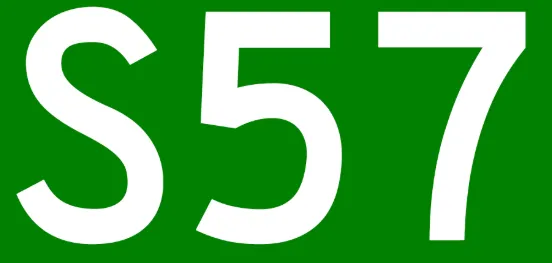S57 (Standard for Electronic Navigational Charts)
Nov 5,2025
GISBox is a one-stop 3D GIS data editing, conversion and publishing platform that supports editing in multiple GIS formats such as OSGB/GEOTIFF/RVT, converting to 3DTiles/Terrain and publishing.
Introduction
S57 (Standard for Electronic Navigational Charts) is an international standard developed by the International Hydrographic Organization (IHO) for the exchange and display of electronic nautical chart data, primarily used in marine navigation systems. It standardizes the format, structure, and content of chart data, ensuring interoperability between electronic nautical chart systems from different manufacturers, providing ships with accurate and unified critical navigation information such as water depth, channel, and obstacles. In short, S57 is the "universal language" of electronic nautical charts, ensuring safe and efficient maritime navigation.

File Structure
The S57 (Electronic Nautical Chart Standard) file structure primarily consists of three parts: header information, data dictionary, and actual data content. The following describes the details:
- Header information: Contains basic attributes such as file version information, data range, and scale. This information is crucial for understanding the entire file content.
- Data dictionary: Defines the attributes of graphic elements, such as symbol type, location information, layer, and associated attributes, providing specifications for data parsing and display.
- The actual data content: This is the main portion of the file storing data. Data is organized in blocks to optimize the reading efficiency of large files. Data blocks are divided into fixed sizes to facilitate the system's rapid location and access to specific data. References are used to link these blocks, enhancing data maintainability and update flexibility.
Pros
- Highly Accurate: S57 standard electronic nautical charts are produced using technologies such as the Global Positioning System (GPS), remote sensing (RS), and geographic information systems (GIS). They provide highly accurate marine geographic information, including seafloor topography, waterways, and port facilities, providing mariners with accurate navigation.
- Real-Time Updates: Using satellite remote sensing and other technologies, S57 standard electronic nautical charts are updated in real time, ensuring mariners have the most up-to-date marine geographic information. This helps them plan routes efficiently, avoid hazardous areas, and improve navigation safety.
- Rich Information: In addition to basic geographic information, S57 standard electronic nautical charts also include a wealth of information such as meteorological, hydrological, and vessel traffic data, providing mariners with comprehensive decision-making support.
- Portable: S57 standard electronic nautical charts are stored in electronic devices, making them lightweight and portable. Furthermore, their data can be easily shared online, meeting the needs of multi-vessel and multi-departmental collaboration.
Cons
- High data update and maintenance costs: Updating data for S57 standard electronic nautical charts requires specialized equipment and personnel, and the update frequency is high, resulting in relatively high data update and maintenance costs. This can be a significant expense for small vessels or navigation organizations.
- Compatibility issues between different data sources: Although the S57 standard is an international standard, compatibility issues between different data sources still exist in practice. This can lead to errors or inconsistencies in data transmission, processing, and display, compromising navigation safety.
- Lack of unified interface standards: Among the numerous electronic nautical chart standards, only one, human-machine interface (HMI), lacks a standard for data layout. Different brands of electronic nautical chart manufacturers may have different design methods, and different countries may have different operating procedures. This results in significant differences in the user interface of electronic nautical charts, making it more difficult for sailors to familiarize themselves with and operate electronic nautical charts.
Application Scenario
The S57 electronic nautical chart standard is widely used in ocean-going and coastal vessel navigation, port management, marine resource exploration, maritime search and rescue, and military defense, providing precise digital geographic information support for navigation safety, waterway maintenance, and marine development. Its core value lies in enabling global interoperability of nautical chart information through a standardized data format, playing a key role in specific scenarios such as automatic collision avoidance for merchant ships, VTS traffic monitoring, and submarine pipeline laying.
Example
- Electronic navigational chart.
_1763974023250.png)
File Opening Mode
- S57 Viewer.
_1763974029142.png)

 Service
Service
